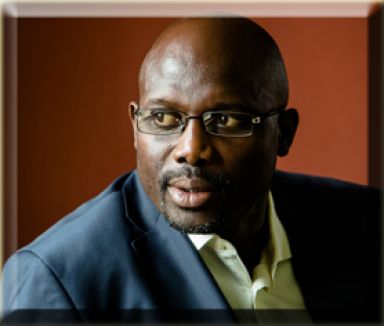
SOURCE: BY ABDOULAYE W. DUKUL
The current debate in Liberia is centered on two loans that the infant
administration of President George M. Weah has entered with certain
private entities to undertake the construction of roads in the Southeast
and in Eastern Liberia. Anyone who spent 16 hours to cover a rocky 500
kilometers – as I did a few times this year – will wholeheartedly
welcome any alternative. A drive on the bush road from Buchanan in Bassa
County to Pleebo in Maryland is akin to a trip into the abyss of time
past. For people in that region, the prospect of a modern road that
would link them to the rest of the country, trumps any other
consideration.
People have raised concerns that should help the Administration to
provide appropriate answers to clear the air. The loans are the largest
any government has ever taken in Liberia’s history. The magnitude of the
amount is unsettling to many. This uneasiness is understandable in a
country that has been lived on hand-outs and humanitarian aid for
decades.
There is no doubt about the prerogative of President Weah to raise
funds to implement his development agenda. However, in an age of global
threats posed by drug and money laundering, human trafficking and
terrorism funding, these are legitimate concerns, especially when
dealing with people so far unknown to Liberians on behalf of who the
money is being borrowed. Unfortunately, the debate has escalated and
wild political rhetoric.
Modernity begins with transportation and electricity. These are the two
greatest challenges facing Liberia. According to estimates, it will
take billions of dollars to connect Liberia to the 21st Century or even
to the 20th century for that matter. The money required will never come
through aid. The highest aid Liberia has ever received was the US grant
through the MCC of $260 million dollars for the Mount Coffee
rehabilitation project. Ten million today, twenty million tomorrow and
sporadic budget support do not fund development. To finance its
infrastructure, Liberia will have to do exactly what other countries
did: get capital. Almost every government in the world currently runs
deficit amounting to many folds of their budget.
The IMF-World Bank’s intervention was crucial in effacing the
excruciating debt Liberia was crumbling under. The $4 billion dollars
forgiven was mostly an accumulation of interest on bad loans, that went
from less than $1 billion under the Interim Government in the 1990s to
four billion by the end of the transition in 2005. Since the eradication
of that debt, billions have poured in in aid and for emergency issues
such as Ebola. The UN system, the World Bank, and the IMF were helpful
in guiding Liberia’s recovery process. Now, the country is entering
another stage and must find new solutions for the emerging and
structural priorities.
Cote d’Ivoire is often a reference of what can be achieved by a
visionary leader in one generation. The late Ivorian President
Houphouet-Boigny is known to never be shy in borrowing: money, talent,
and creativity, he took them wherever he could find them and made them
work for his vision. This took Cote d’Ivoire from being the
less-developed francophone country in 1960 to become the economic engine
of an entire region. The country is now heavily indebted but continues
to enjoy the confidence of lenders, be it the World Bank who just poured
close to a billion dollars in cocoa development to the Chinese who
invested more than a billion in rural energy and banks who invested both
in the private and the public sectors or the US providing some $780
million on the MCA account. The economic infrastructure laid by
Houphouet-Boigny evolved on two prongs: infrastructure (electricity,
roads) and agriculture, both capital intensive. Strategy, discipline,
and patriotism served as the thread that kept everything in sync.
One could ask, if under different global financial system,
Liberia could have done better if it were able to borrow $4 billion
dollars in 2006 to invest in infrastructure, agriculture and private
sector rather than receive debt forgiveness.
To develop its potentials, Liberia will need to borrow capital. The
question is from whom and under what conditions should it borrow. When
and if the money comes, the other question would be: how well will it be
managed? How much of it will go to the projects its intended for? How
much will be siphoned into private accounts? Does the country have the
capacity to avoid waste, theft, and mismanagement?
The final question is whether the two projects will finish in time to create economic dividends to justify their costs.
There are many questions, but one thing is certain, Liberia will have
to borrow a lot of money to finance its development. Investors will not
come if there is no infrastructure. Local markets will not develop if
there is no infrastructure. Bilateral partners and traditional financial
institutions will be of no help. So, borrow, Liberia will have to: but
from whom and to what end and under what conditions are the questions.

Be the first to comment